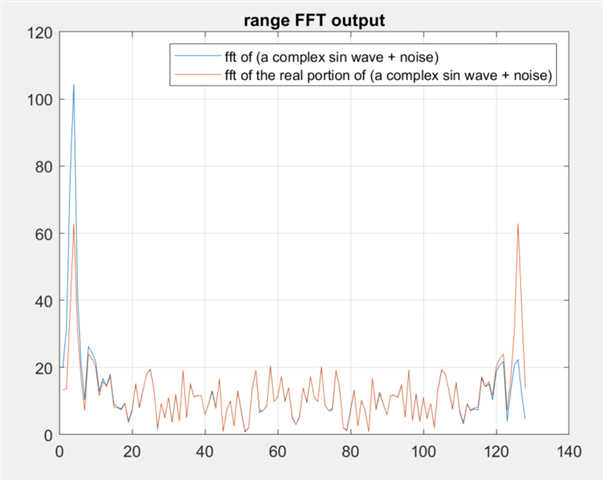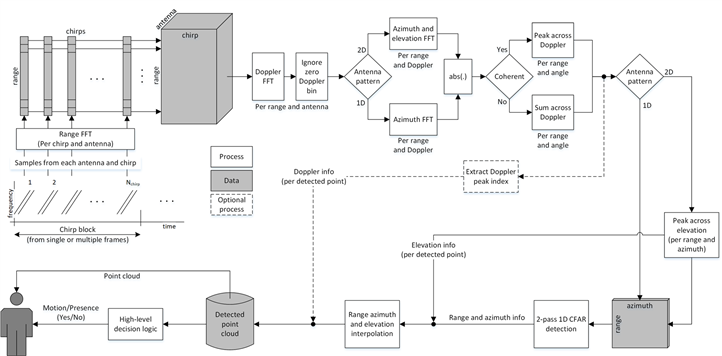Other Parts Discussed in Thread: IWRL6432
Tool/software:
Hello TI Team,
I am currently working with the IWRL6432BOOST and the DCA1000 to capture raw ADC data. As I understand it, the DCA1000 only provides real (I-only) ADC samples, and does not output the quadrature (Q) component.
I know that performing a Range FFT is possible using only real-valued ADC samples.
However, my main question is:
How can Doppler and angle (AoA) estimation be performed without access to the Q data or explicit phase information?
Has the IWRL6432 an intern quadrature Filter? Or is the phase information computed and used internally, even though it is not available through the DCA1000?
Furthermore, the out-of-box demo can output a point cloud over UART, which includes range, velocity, and angle information.
How is this calculated if only real ADC data is available?
My assumption is that TI internally reconstructs a complex signal representation (e.g., using a Hilbert transform or internal phase modeling) to enable this processing. Is that correct?
For custom processing in MATLAB or Python, would it be advisable to reconstruct a complex signal from the real ADC samples using a Hilbert transform, in order to perform Doppler and angle FFTs?
Thank you in advance for your support!



